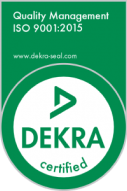In our modern digital world, data is like gold. It helps organizations make smarter business decisions, improve how they work, and better understand their customers. But as we gather more and more data, it’s vital to have a good plan in place to manage it. That’s where data governance comes in. It’s all about making sure your data is available, useful, accurate, and safe. This involves making clear who does what, setting up rules and processes, and making sure your data is high quality and secure. Let’s look at why data governance is so important.
Why Bother With Data Governance?
Better Data Quality
One big win from data governance is that it helps you get better data. When you manage your data well, it’s easier to make sure your data is accurate, consistent, and up to date. This means you can make decisions based on data you can trust.
Improved Data Security
Data security is getting more important every day, especially with the rise of cyber-attacks and data breaches. Data governance helps you protect your data by setting up rules about who can do what, putting in processes for using data, and setting up measures to keep data safe from unauthorized access or theft. By having a good data governance plan, you can lower the risk of data breaches and keep sensitive information safe.
Data is Available When Needed
Data governance also makes sure that data is easy to get to for those who need it. When you manage your data well, it’s easier to look after, which means it’s there when you need it. This helps improve decision-making and efficiency, as staff can get the information they need faster.
Stay on the Right Side of the Law
Lastly, data governance helps you comply with data protection laws, like the European Union’s General Data Protection Regulation (GDPR) and the California Consumer Privacy Act (CCPA). These laws require strong data protection measures, and by using data governance, you can make sure you’re following these laws and avoid any expensive fines.
How Columbia Advisory Group gets it Right
Columbia Advisory Group (CAG) knows how important data governance is and has put a great strategy in place to make sure its data is high quality, secure, and available when needed. We’ve made a plan that lays out who does what and provides guidelines for using data. This makes sure the data they use is accurate, consistent, and safe. CAG has also used technology to help manage and look after their data. We use data management and analytics platforms, as well as security solutions that protect their data from unauthorized access or theft. By using these tools, CAG makes sure their data is managed in a way that’s effective and efficient. So, why not check us out and get your data in line?
Tim Taylor
Practice Lead
About Columbia Advisory Group
Founded in Dallas in 2012, Columbia Advisory Group LLC (CAG) is an established IT consulting firm renowned for delivering cost-effective, meaningful, and practical IT solutions that solve complex business problems. Our seasoned teams offer comprehensive insight across diverse regulatory and economic environments, providing unbiased, straightforward analysis and recommendations. We pride ourselves on our deep understanding of IT while remaining software and hardware-agnostic. Regardless of your organization’s growth trajectory or economic landscape, we at CAG are adept at adapting to your unique needs and complexity, offering tailored solutions to drive your success.
Contact us at info@columbiaadvisory.com.



